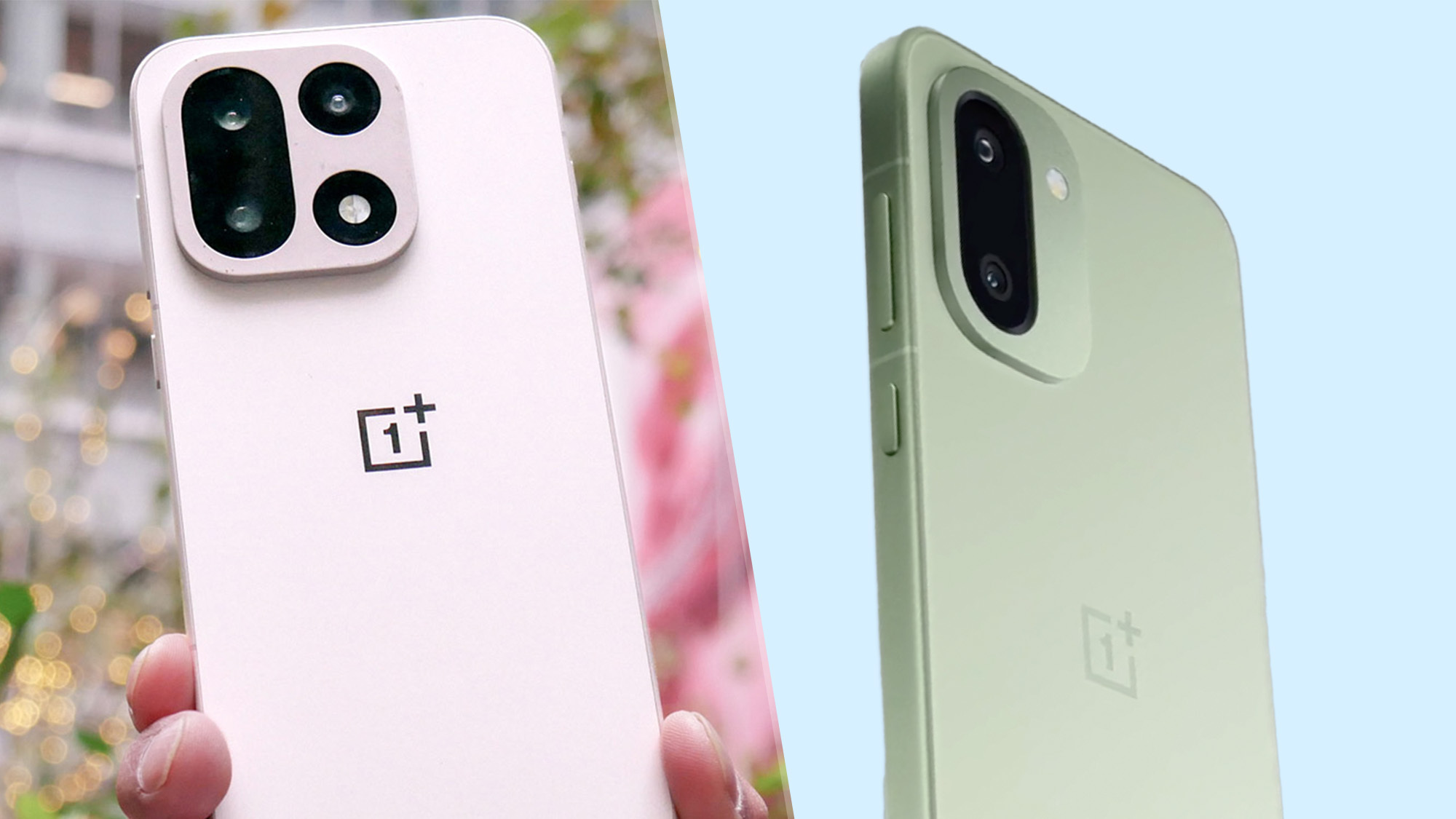Samsung Galaxy Watch 4 vs Fitbit Sense: Which should you buy?
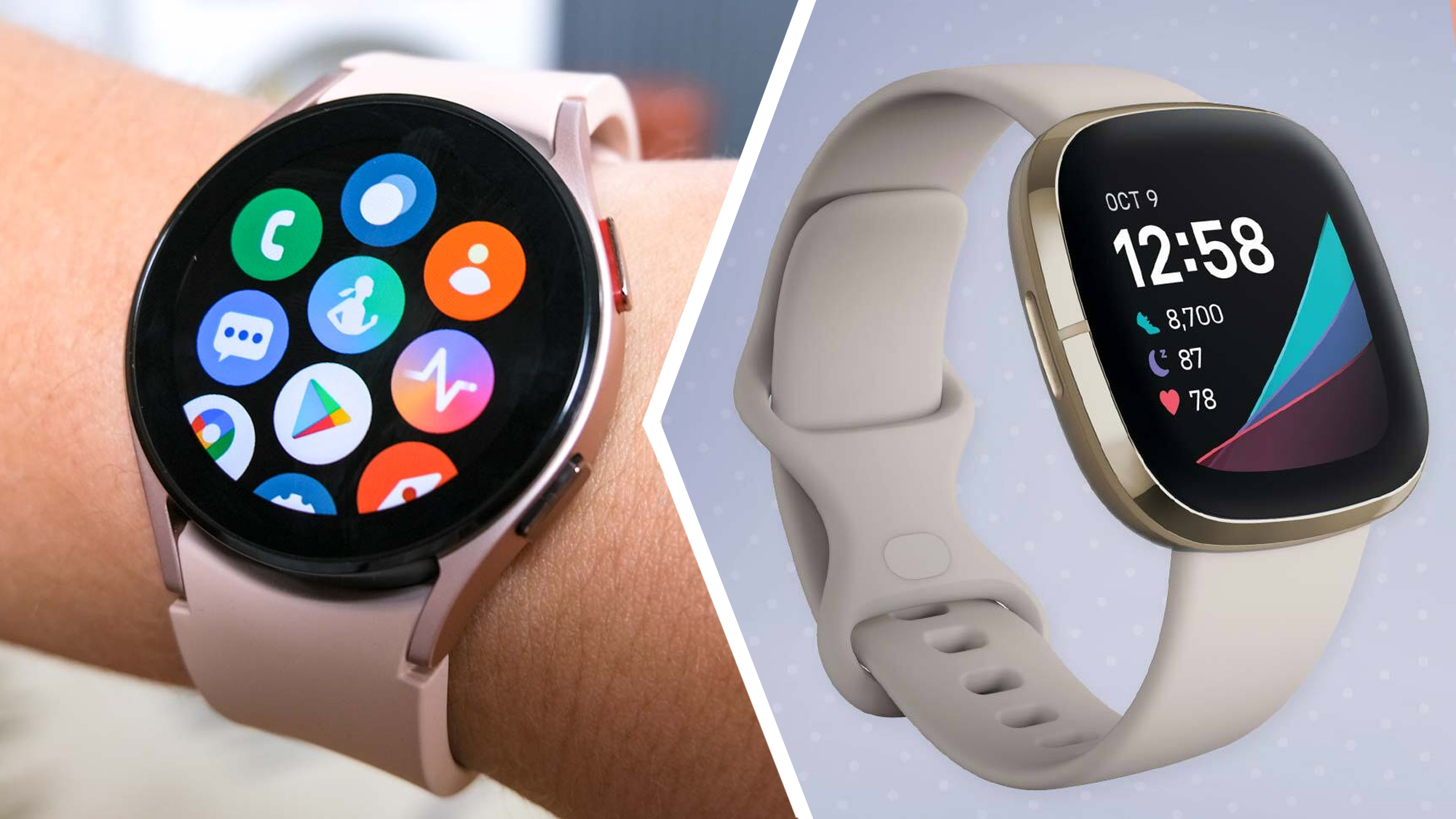
Deciding between the Samsung Galaxy Watch 4 vs. Fitbit Sense? As two of the best smartwatches on the market, both offer unique benefits. making it a tough choice.
The Samsung Galaxy Watch 4 (starting at $249) is fresher than the Fitbit Sense ($299) and the best smartwatch for Android overall. But the Sense remains an ambitious, health-centric wearable that keeps up with Samsung's standout features. Though it doesn't run the new Google Wear OS like the Galaxy Watch 4, the Sense flaunts fantastic fitness tracking tools, an intuitive interface and more.
- Samsung Galaxy Watch 4 vs. Galaxy Watch 3: What's different?
- Everything you need to know about the Fitbit Charge 5
- Fibit is enabling snore and noise detection - here’s how to enable it
If you're wondering which smartwatch to get, you've come to the right place. We've spent several hours testing the Samsung Galaxy Watch 4 and Fitbit Sense, so we know the differences that matter most from price and design to health features and battery life.
Here's how the Samsung Galaxy Watch 4 vs. Fitbit Sense stack up.
Samsung Galaxy Watch 4 vs. Fitbit Sense: Specs compared
| Header Cell - Column 0 | Samsung Galaxy Watch 4 | Fitbit Sense |
|---|---|---|
| Starting price | $249.99 | $299.95 |
| Sizes | 40mm/44mm;42mm/46mm (Classic) | 40.5mm |
| Battery life (rated) | Up to 40 hours | Up to 6 days |
| Connectivity | Bluetooth, Wi-Fi, LTE (optional), NFC | Bluetooth, Wi-Fi, NFC |
| GPS | Yes | Yes |
| Memory | 16GB | 4GB |
| Smartphone compatibility | Android | Android, iPhone |
| Color options | Black, Silver, Pink Gold, Green | Graphite, Silver, Gold |
Samsung Galaxy Watch 4 vs. Fitbit Sense: Price
Let's start with the obvious: The Fitbit Sense costs $299.95; the Samsung Galaxy Watch 4 starts at $249.99. That's a difference of about $50, without all the other add-ons you can consider for Samsung's latest smartwatch.
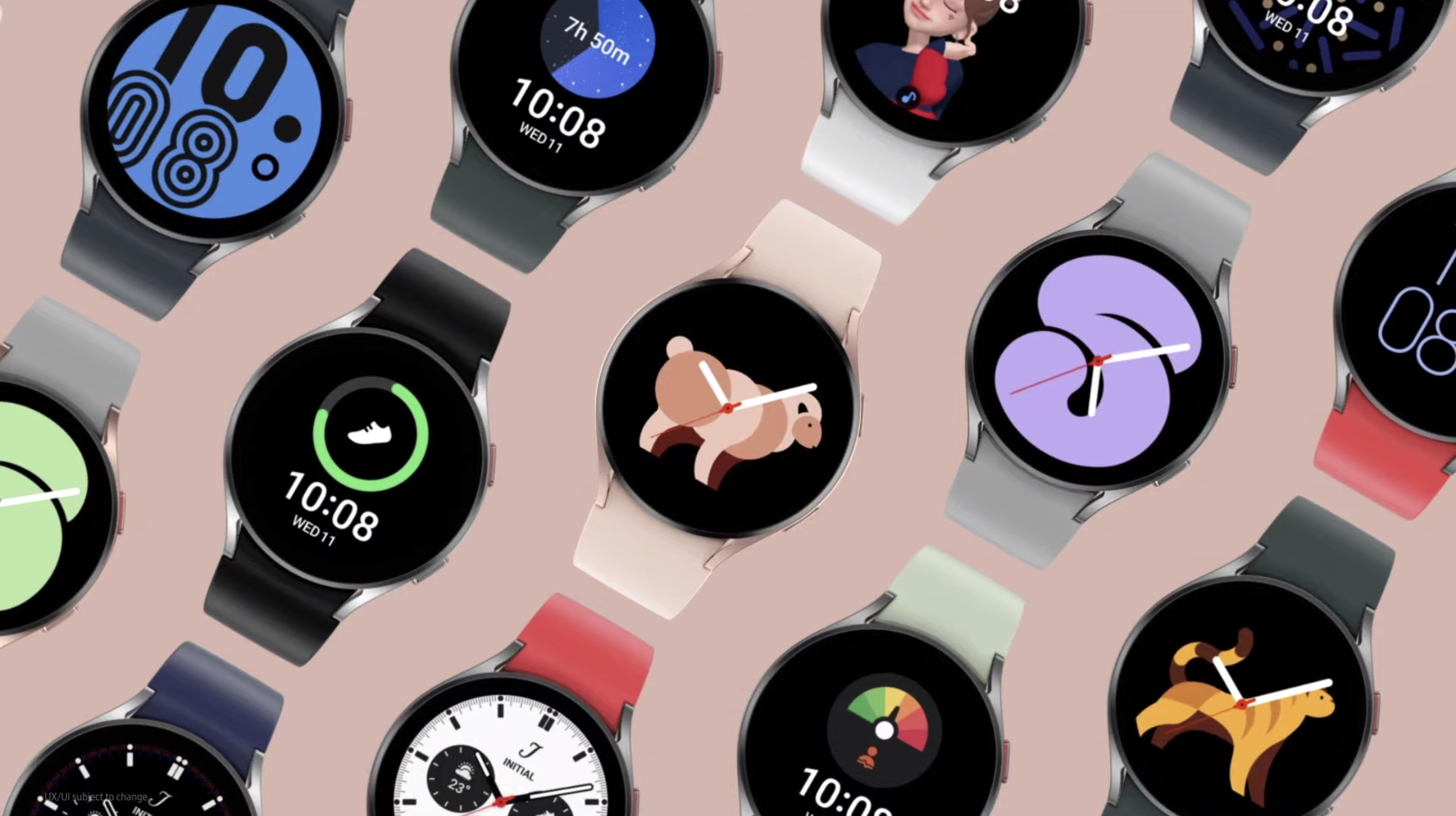
The standard Galaxy Watch 4 in the 40mm size without LTE is the most affordable way to get the smartwatch on your wrist. You'll spend $299.99 for the 40mm LTE model, while the 44mm model costs $279.99 without LTE and $329.99 with LTE.
You could opt for the Galaxy Watch 4 Classic, too. The fancier of the two Galaxy Watch 4 designs starts at $349.99 for the 42mm Bluetooth model and $399.99 for the 42mm LTE model. The 46mm version is priced at $379.99 for Bluetooth and $429.99 for LTE.
Get instant access to breaking news, the hottest reviews, great deals and helpful tips.
Samsung Galaxy Watch 4 vs. Fitbit Sense: Design and display
The Samsung Galaxy Watch 4 and Fitbit Sense are quiet different in terms of design. For one, the new Galaxy Watch 4 series looks more like a traditional watch, especially with the Classic model's physical rotating bezel and stainless steel chassis. The Fitbit Sense is a sporty-looking squircle, kind of like the Apple Watch 6 and all previous Apple Watch models.
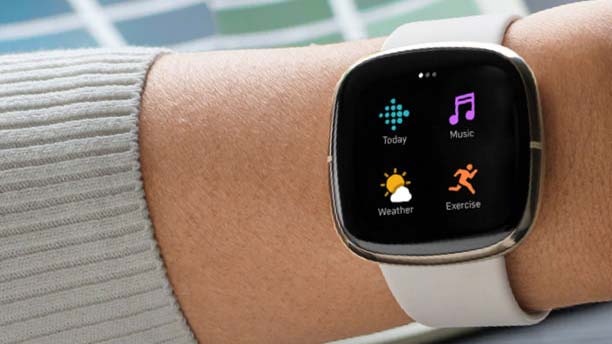
Unlike the Apple Watch (and the Galaxy Watch 4, for that matter) the Fitbit Sense doesn't have any protruding buttons. Instead it provides capacitative touch controls on the right side. It's a pretty sleek effect, in our opinion.
The Sense's 1.58-inch AMOLED display has a resolution of 336 x 336 pixels. That's lower than the Samsung Galaxy Watch 4's, which starts at 396x396 pixels for the smallest watch size but goes up to 450 x 450 pixels for the larger options. Most people shouldn't notice the disparity, though the Galaxy Watch's display certainly looks sharper when you look at the two watches side by side.
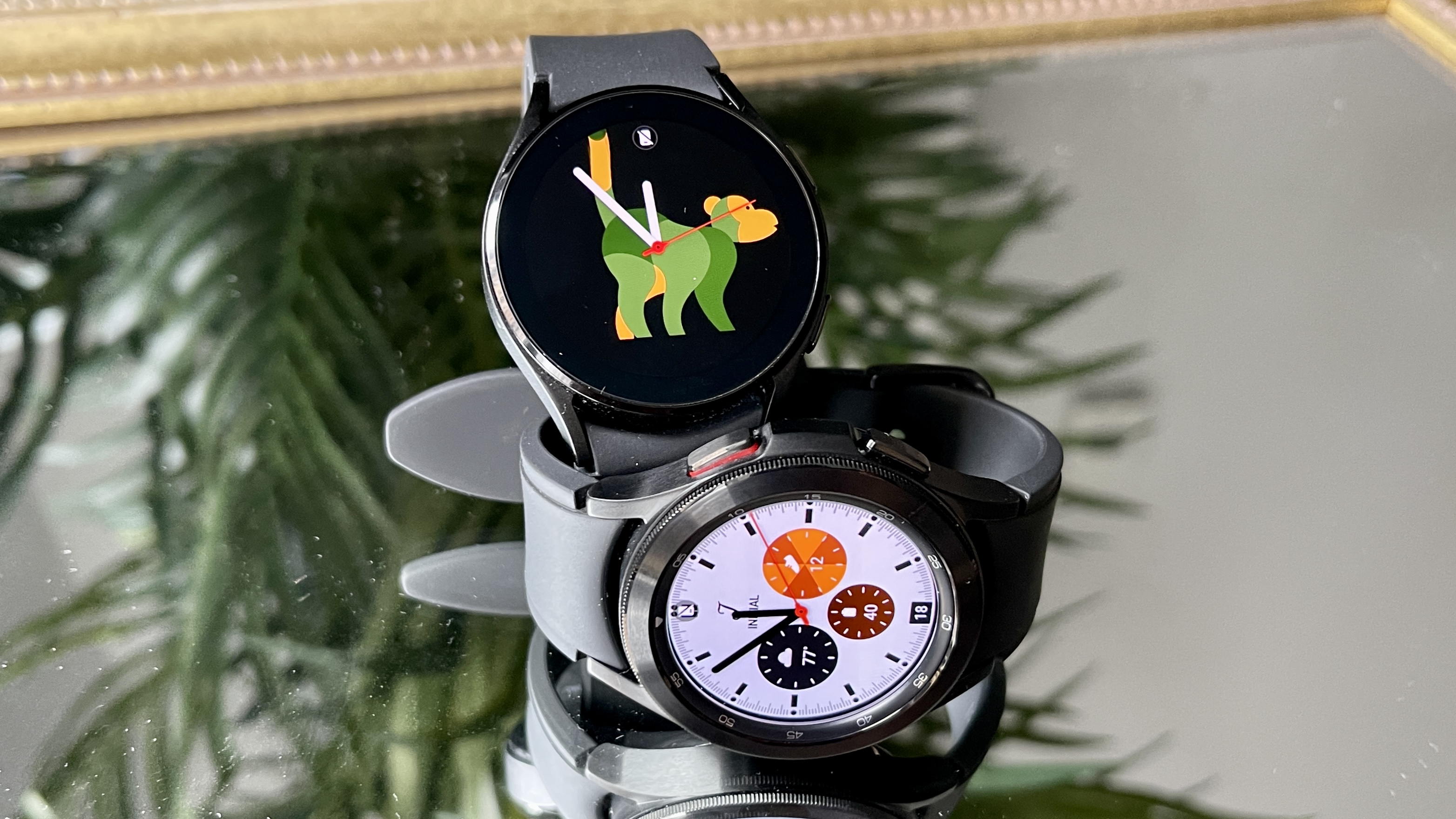
Both watches offer customization by means of color options and watch straps. The Galaxy Watch 4 and Fitbit Sense each come in an array of metallic finishes. Plus you can swap out the included bands for ones that suit your personal style at any time.
Samsung Galaxy Watch 4 vs. Fitbit Sense: Health features
In most cases, a smartwatch is only as good as its health features. The Samsung Galaxy Watch 4 and Fitbit Sense both support a number of tools for staying on top of your physical and mental wellbeing. The Samsung Galaxy Watch 4 body composition analysis feature can even tell you your body's makeup through bioelectrical impedance analysis.
Compared to all the best Fitbits, the Fitbit Sense is the most immersive when it comes to health features. The stress-reading EDA and skin temperature sensor are unique to Fitbit, and are meant to give you a better understanding of just how you’re doing. It remains to be seen how useful these metrics are, but Fitbit deserves some credit for trying something new.

Both smartwatches have heart rate measuring, sleep tracking, SpO2 reading and menstrual cycle logging, plus the ability to perform FDA-approved ECGs to detect for atrial fibrillation. But the ECG function on the Galaxy Watch 4 only works if you've paired your smartwatch to one of the best Samsung phones. Any Fitbit Sense user can use their smartwatch to see if there's any call to be concerned about their heart rhythm.
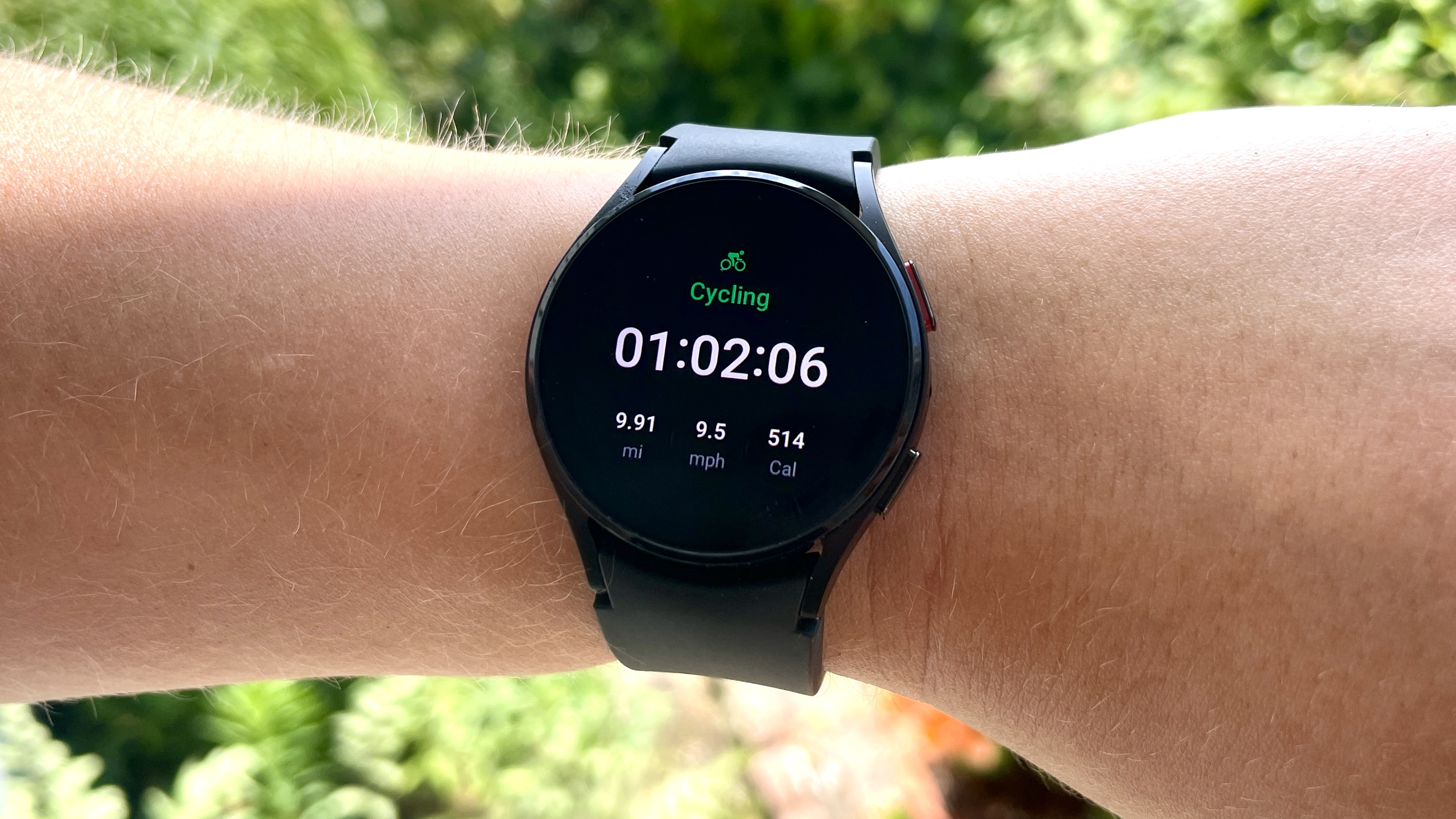
You can use either smartwatch for precise workout tracking, whether you want something that auto-tracks (or auto-pauses) your exercise, accurately follows your route via GPS, shows you important metrics in real-time or supports a wide variety of workout types. Our Samsung Galaxy Watch 4 workout test impressed all around, but the Fitbit Sense's Active Zone Minutes feature remains one our favorite methods for meeting exercise goals. You're encouraged to meet the AHA’s and WHO’s recommended 150 Active Zone Minutes each week.
Samsung Galaxy Watch 4 vs. Fitbit Sense: Software
Beyond health features, the Samsung Galaxy Watch 4 and Fitbit Sense hold a number of communication and productivity features. Though Fitbit is owned by Google, the Galaxy Watch is one of these two smartwatches that runs Wear OS. The Fitbit Sense, meanwhile, has a proprietary OS. The Samsung Galaxy Watch 4 Wear OS features are more sophisticated and comprehensive, but Fitbit's software is intuitive, simple and great for first-time smartwatch users.
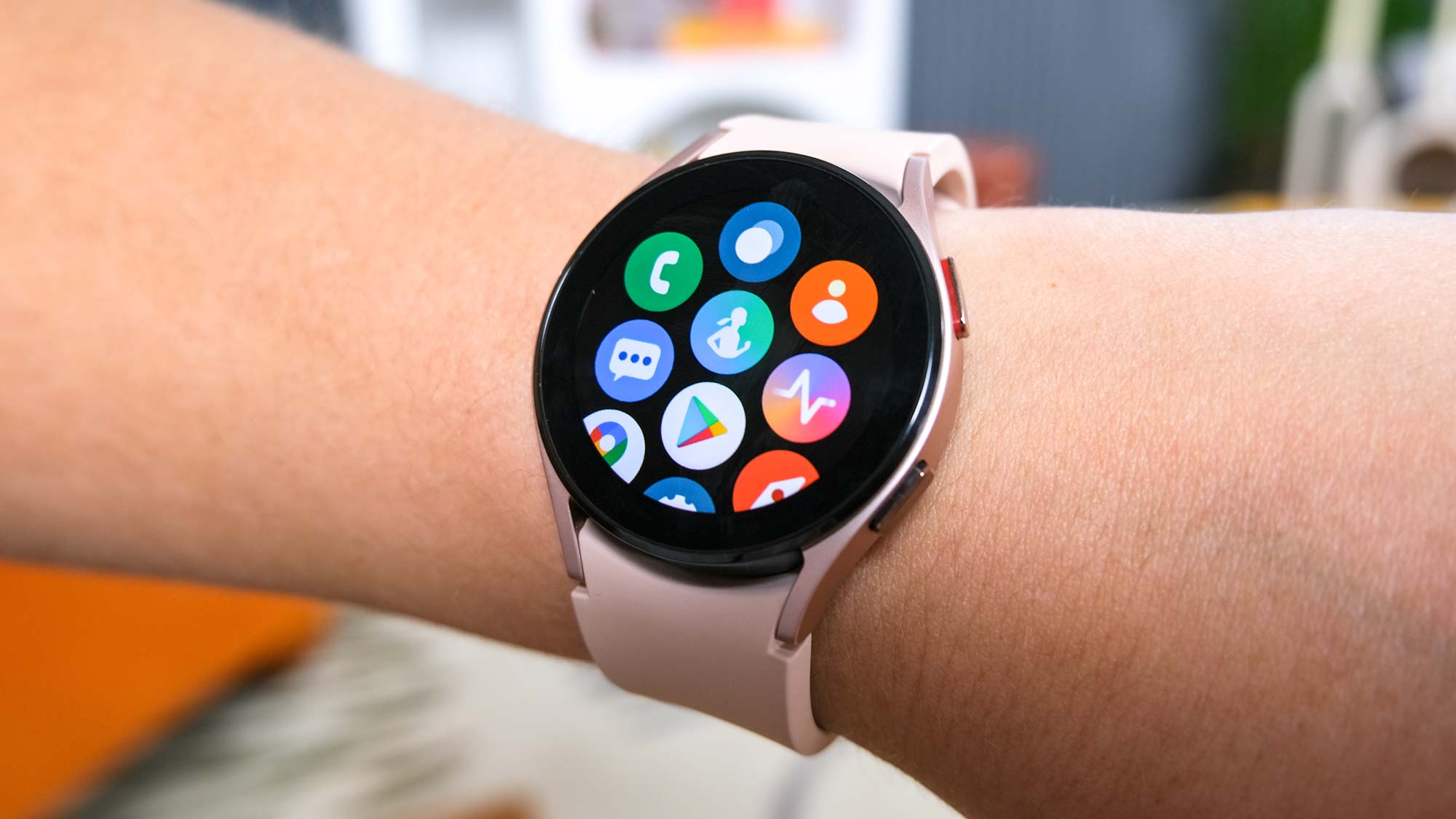
Similarly, the Samsung Galaxy Watch 4 gets more apps than the Fitbit Sense. Chances are you'll learn into Fitbit's own activity tracking app or even Fitbit Premium with the Sense, but with the Galaxy Watch 4 you might find the best running apps or best workout apps you already use. The Galaxy Watch 4 also gets Google's suite of programs, like Google Maps and Google Play Music.
Though Google Assistant is one program Samsung's smartwatch is notably missing. For voice controls, Bixby is your only option for now. The Fitbit Sense supports Google Assistant and Alexa (you can only enable one at a time) so you can give your AI of choice queries right from your wrist.

Now onto some important distinctions as far as communication and compatibility is concerned. First, the Galaxy Watch 4 only works with Android phones, while the Fitbit Sense works with any of the best phones, even iPhones. Both can be used to take calls on answer texts, but only with a compatible Android phone. Yes, even if you've paired your Sense to an iPhone.
Also, the Galaxy Watch 4 offers LTE support through a wireless provider at an additional fee, while the Fitbit Sense does not provide the same option. That means your Sense always needs to be tethered to your phone to mirror notifications or activate your voice assistant. The Galaxy Watch 4 can stand independent of a phone without sacrificing communication features.
Samsung Galaxy Watch 4 vs. Fitbit Sense: Battery life
Compared to the Samsung Galaxy Watch 4's 40-hour battery life, the Fitbit Sense’s claimed 6-day battery life is absolutely epic. (If you’re using GPS actively, the battery life is about 12 hours). Considering the watch is meant to be worn all day and night, it helps that you don’t have to remember to charge it every day. You can even leave your charger behind when you take certain weekend trips.
We found the Galaxy Watch 4 requires a daily charge to power features like an always-on display and routine fitness tracking. The battery life of Samsung's latest smartwatch is somewhat inconsistent, but as long as you've come to terms with tossing in on its charger for a little bit every day, you should be OK.
Samsung Galaxy Watch 4 vs. Fitbit Sense: Which should you buy?
We can confidently recommend both the Samsung Galaxy Watch 4 and Fitbit Sense to our readers, and both come at a fair price. But if you're asking which is better for you — the Samsung Galaxy Watch 4 vs. Fitbit Sense — here's our advice:
The Samsung Galaxy Watch 4 is the more well-rounded smartwatch. It has more comprehensive software, communications features and a couple of configurations to choose from. Get it if you have a Samsung smartphone, and check out our Samsung Galaxy Watch 4 vs. Galaxy Watch 4 Classic guide for more on which design option is right for you.
The Fitbit Sense is the better health device, and has better compatibility if you own an iPhone. This smartwatch's approach to helping your understand your body is holistic, beyond the percentages of your physical makeup. It might not keep you connected to the world as well as the Galaxy Watch 4, but it'll keep you connected to yourself.
- Next: See the best Fitbit deals now

Kate Kozuch is the managing editor of social and video at Tom’s Guide. She writes about smartwatches, TVs, audio devices, and some cooking appliances, too. Kate appears on Fox News to talk tech trends and runs the Tom's Guide TikTok account, which you should be following if you don't already. When she’s not filming tech videos, you can find her taking up a new sport, mastering the NYT Crossword or channeling her inner celebrity chef.
